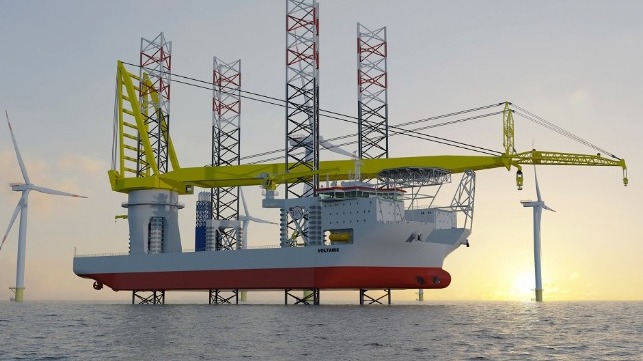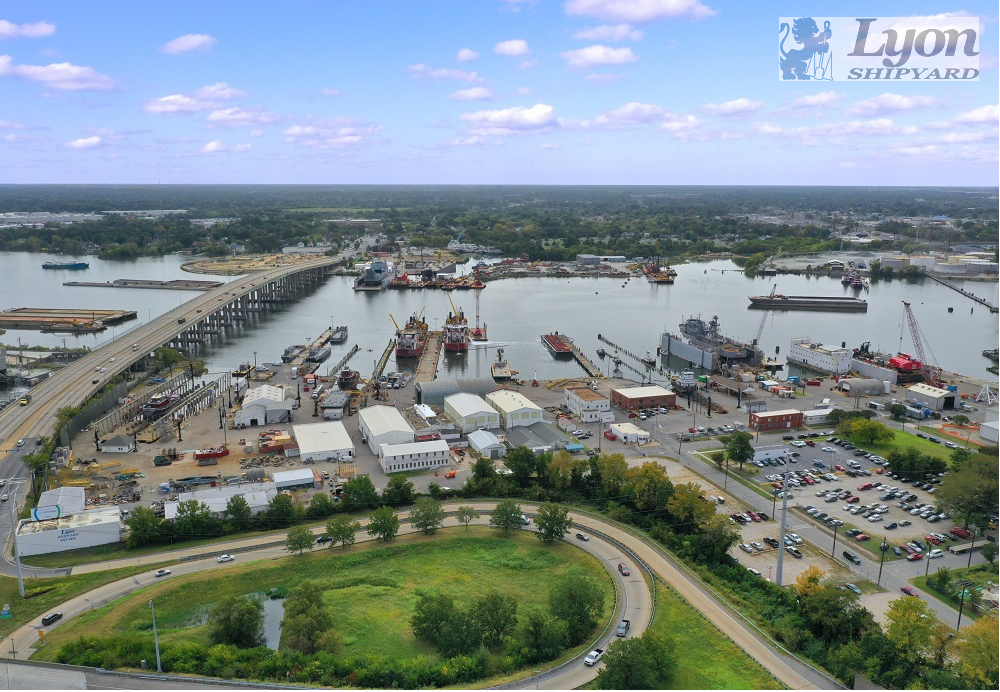SCHOTTEL and LYON SHIPYARD Work Together to Serve U.S. Offshore Wind

Thruster manufacturer SCHOTTEL has reached a mutual agreement with Norfolk-based Lyon Shipyard to position both companies for the launch of the U.S. offshore wind industry. Wind turbine installation vessels (WTIVs) and service operation vessels (SOVs) are all built with azimuth drives, and these units will need periodic service and maintenance - a Lyon specialty.
The partnership started with harbor tugs. Moran Towing serves the Hampton Roads region with more than a dozen tugs, providing ship assist for commercial vessels at the Port of Virginia and the warships that transit in and out of Naval Station Norfolk. Those tugs need periodic service, and they often call at Lyon Shipyard.
"We do about 12-13 drydockings a year for Moran, and I'd say that 90 percent of the tugs are Z-drive boats. Moran was kind enough to hire a Z-drive tech rep from SCHOTTEL, and we started overhauling the drive units here under their supervision. Five years later, we now have a plethora of Z-drives, including spare units and spare parts," says Johnny Gaskins, VP of production at Lyon. "We finally said, OK, we need to build a shop for this."

In March 2018, Gaskins finalized a partnership agreement with the president of SCHOTTEL's U.S. operations, Gary Aucoin. Under the deal, Lyon Shipyard invested in a 5,400 square foot Z-drive maintenance building, and SCHOTTEL provides Lyon with technicians and technical support. The agreement gives SCHOTTEL a more established service base on the U.S. East Coast and brings in more business for Lyon at the same time. The agreement was established based on their shared long-term strategy to support both the existing market and the up-and-coming offshore wind farm industry. The shop's activity now supports 8-10 jobs and generates several million dollars a year in revenue for the yard.
"It's been really good - I can't say enough about that group out of Houma, they're just great to work with," says Gaskins.
Building on their success, the partners are now looking ahead at the nascent U.S. offshore wind sector. SCHOTTEL has extensive experience in the European offshore wind sector, and some of its drive units could easily be powering wind turbine installations off the U.S. East Coast within the next two to three years.
-(1).jpg)
Vole au Vent (Illustration courtesy Jan de Nul / SCHOTTEL)
The global wind industry has a limited supply of dedicated wind turbine installation vessels (WTIVs), and two of them are equipped with SCHOTTEL thrusters - DEME's Innovation and Jan de Nul's Vole au Vent. Two more wind installation vessels - Jan de Nul's far larger Voltaire and Les Alizés - are under construction with SCHOTTEL drive systems, according to senior sales manager Christian Heidrich. When delivered in 2022, they will be among the largest ships of their kind in the world.
At present, there are no U.S.-built WTIVs in service, and it is expected that the first American offshore wind farms will be installed by European vessels. In fact, the Vole au Vent (and her SCHOTTEL thrusters) visited U.S. waters last year to install two turbines at a trial site off Virginia, Heidrich notes. When they begin installation work in earnest, these specialized jack-up ships will be able to access Lyon's capabilities for any needed service and periodic maintenance.
Looking ahead, U.S. wind farm operations will also require a large fleet of Jones Act-qualified service operation vessels (SOVs), which will be fitted with thrusters and DP systems. Like Moran's tugs, these vessels will require periodic drydocking, maintenance and thruster overhauls - a potential long term business opportunity. The coming U.S. offshore wind boom will create new economic activity up and down the maritime supply chain, and through their new partnership, Lyon Shipyard and SCHOTTEL are prepared to seize the moment.
This message is sponsored by SCHOTTEL.
The opinions expressed herein are the author's and not necessarily those of The Maritime Executive.
